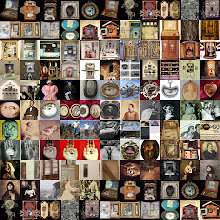I went to a talk today titled Dissection and Witchcraft: Images of Corpses in Early Modern Art, by Constanza Isaza Martinez, which was based on her MA dissertation (History of Art, Courtauld Institute), at the Last Tuesday Society, part of a series of lectures organised by Morbid Anatomy.
Last time I heard about the Last Tuesday Society was admiring a beautifully crafted flyer for one of their famous parties, and besides throwing unique quirky parties, they are an organisation "devoted to exploring and furthering the esoteric, literary and artistic aspects of life in London and beyond", and they have the most amazing taxidermy-fanatic shop (11 Mare Street).
I have also come across Morbid Anatomy before, a blog and library based in Brooklyn, New York, who exist to survey 'the interstices of art and medicine, death and culture'. Sharing their love for skeletons, and corpses across the animal kingdom, these two uncanny venues have come together to delight us with a series of lectures and workshops throughout June and July, check their websites for more info.
So there I was, in the back room of the shop, still recovering from marvellous and monstrous sights such as a two-headed bat, a monkey-mermaid and a winged rodent.
Constanza's lecture was unique and fascinating in combining two realms that share a predilection for the body: witchcraft and anatomy. She discussed ways in which both the anatomist and the witch use the body, body parts and fluids, to exert their power. Similarly, they access the insides to search for ointments, particular organs or excretions to create their concoctions. Yet their status and representation could not be furthest apart, precisely because anatomists wanted to disassociate themselves from any occult practices, and wanted to present their practice as a new mission exclusively driven by the discovery of knowledge and truth, and completely unrelated to morbid curiosity.
All this talk was illustrated by historical prints of witches and anatomical illustrations, including the work of Vesalius and Alfred Durer and Hans Baldung. I truly enjoyed the lecture, which I found touched on a matter that has not been researched enough, and which my own research is concerned with.
Witches in a Cellar, Jacob de Gheyn II.




